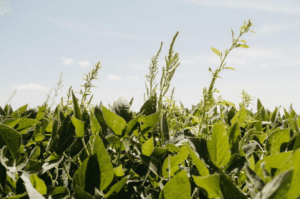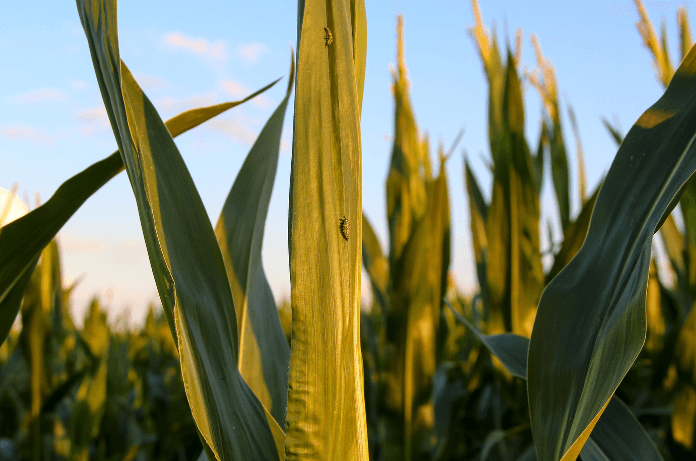Climate change is reshaping agriculture, bringing challenges that farmers are just beginning to grasp. Among the most alarming is the diminishing efficacy of herbicides, the very tools that protect crops like corn and soybeans from aggressive weeds. A few years ago, researchers highlighted how soil-applied herbicides struggle against weeds in a changing climate. Now, the same team, led by the USDA Agricultural Research Service (USDA-ARS) and the University of Illinois Urbana-Champaign, has confirmed that post-emergence (POST) herbicides used after crops and weeds have sprouted are also becoming less effective due to shifting weather patterns.
As extreme weather events like prolonged droughts, unexpected floods, and rising temperatures become more frequent in North America’s major corn and soybean-growing regions, they pose a critical question- how will climate change impact weed control?
The answer, based on a 30-year analysis across thousands of environments, reveals a sobering truth.
Weather Impacts Herbicide Performance
The research utilized a database spanning three decades from 16 weed science programs across the U.S. Corn Belt, analyzing the effects of weather on three major POST herbicides – fomesafen, glyphosate, and mesotrione. These herbicides target water hemp, giant foxtail, and morning-glory species, which are among the most troublesome weeds for farmers.
Key findings highlight the pivotal role of weather conditions both before and after POST herbicide application:
- Temperature: Herbicide effectiveness significantly declined when average air temperatures dropped below 66°F or rose above 77°F within 10 days of application.
- Excessively hot conditions after application can trigger rapid metabolism in plants, neutralizing the herbicide more quickly and making herbicide less effective. On the other hand, colder temperatures slow down herbicide absorption and movement within weeds, reducing efficacy.
- Precipitation: Rainfall patterns also influenced herbicide success, though effects varied. Dry conditions before application can cause weeds to develop a thicker waxy cuticle, making it harder for herbicides to penetrate. Heavy rains immediately after application may wash herbicides off leaf surfaces or stress weeds, altering their response.
The cumulative impact of these weather variables has made weed control increasingly unpredictable. Farmers relying solely on POST herbicides may find their efforts insufficient, jeopardizing crop yields and global food security.
The Implications for Farmers
Farmers in the Corn Belt already face challenges like spring flooding and summer droughts. With climate change exacerbating these conditions, even their go-to weed control tools are under siege. Chris Landau, a postdoctoral researcher at USDA-ARS and lead author of the study, explains, “The analysis showed air temperature and precipitation were linked with herbicide effectiveness days before and after application for the products and weeds we studied.”

By studying thousands of data points from diverse weather conditions over 30 years, the team was able to identify clear patterns. While combining herbicides like glyphosate and fomesafen showed more resilience across varying conditions, even these combinations cannot guarantee success.
Marty Williams, USDA-ARS ecologist and co-author of the study, points out that the discipline of weed science needs to innovate quickly. “Collectively, weeds are adapting quicker than our ways to manage them. Climate change appears poised to put this evolution on a faster track.” Without proactive research and development, failing weed control could result in devastating losses for farmers.
Building a Resilient Future for Weed Control
So, what can farmers do to combat this growing threat? The researchers emphasize the importance of integrated weed management strategies:
- Layering Tools: Combining POST herbicides with effective soil-applied residual herbicides can provide more consistent results.
- Non-Chemical Tactics: Approaches like crop rotation, cover cropping, and mechanical weed control should be part of the solution.
- Innovation: Investing in new tools and technologies is critical. As weeds continue to evolve, so must the strategies to combat them.
Williams warns of the consequences of inaction. “The cost of waiting until everything fails could be painful,” he says. Farmers, scientists, and policymakers must collaborate to stay ahead of these challenges.
The findings from this groundbreaking study are clear: climate change is rewriting the rules of agriculture. As temperatures rise and precipitation patterns shift, farmers must adapt their practices to ensure effective weed control. But this battle cannot be fought alone. It requires investment in research, development of innovative solutions, and widespread education on integrated weed management.
For farmers, the stakes are high. Without adequate weed control, corn and soybean yields and the global food supply face serious risks. The time to act is now. Whether it’s adopting new strategies, supporting research, or advocating for policies that address climate change, every effort counts in protecting our crops, livelihoods, and future.

